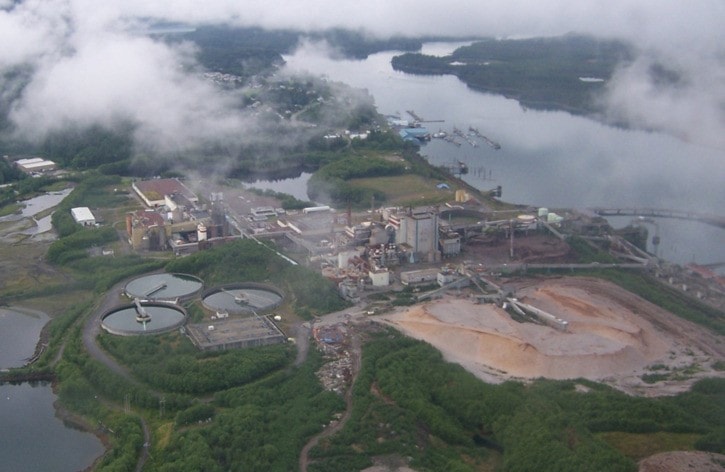Long-bankrupt Skeena Cellulose might be a distant, if still painful, memory to those in the northwest – but not to the provincial government.
The once dominant forest industry player in northwestern B.C. which contributed to a decade-long regional recession when it sought bankruptcy protection in 1997 and then officially went out of business in 2004, remains on the list of businesses and people owing money to the provincial government.
A $75,000 fine, first levied in 2003, was included in a late December 2013 public shaming list released by the provincial environment ministry.
The ministry of environment is hoping that by “naming names and taking away privileges” for 18 businesses and 155 individuals it will increase the collection rate of overdue environmental court fees owed to the province or to the Habitat Conservation Trust Foundation, reads a release sent out by environment minister Mary Polak Dec. 11 of last year.
But in the case of Skeena Cellulose, which officially declared bankruptcy in September 2004, the province has already admitted it hasn't been able to contact anyone connected with the company.
Skeena Cellulose was convicted in provincial court for violating section 3(2) of the Waste Management Act – introducing waste while conducting business – on May 6 of 2003 in Prince Rupert in relation to its pulp mill at Port Edward and ordered to pay a fine of $75,000 to the province by Jan. 15, 2004.
When the fine wasn't paid by that date, the government says it began taking steps to collect the money owed.
According to a timeline provided by the ministry, in March 2005 the fine was originally assigned to government to collect and a notification sent to Skeena Cellulose. In between March 2005 and July 2007, numerous attempts were made to contact the company by both letter and telephone. Attempts were unanswered and correspondence was returned undeliverable.
And in late July of 2007, the province put the account on hold for further collection as contact had been lost with the company – letters had been returned undeliverable and there had been no contact from the last known trustee connected to Skeena Cellulose.
And while the province can suspend or cancel permits or licences for businesses (and individuals) with outstanding payments to coerce them into paying up, details are less clear on what the province can specifically do to collect with regards to defunct companies like Skeena Cellulose.
“All attempts will be made by the province to collect,” read a response from a ministry spokesperson when asked what steps the province could take to collect money from a company that has been bankrupt for nearly a decade.
Numerous requests sent to the ministry asking for specific actions the province could undertake at this point to collect from a long-bankrupt company like Skeena Cellulose were not answered, but the ministry did acknowledge that some debts may eventually need to be written off.
“Ultimately, there will be circumstances where a fine is simply uncollectable, such as a dissolved company or a deceased individual, and those debts will eventually have to be written off,” said the ministry.
The statute of limitations on environment court fees is 10 years.
The businesses and individuals named in the report collectively owe more than $1.5 million in environmental court penalties, with 20 of the parties named located in the north coast region (from Burns Lake to Masset) owing a total of $119,500.
The province has set a goal of collecting 95 per cent of these outstanding fines by June 2014.
“The top 12 fines owed represent 89 per cent of the total outstanding amount,” said the ministry. “Collecting these fines would increase the rate of payment to 92 per cent. The ministry has set a very ambitious target for this project because it is considered feasible.”
The $75,000 fine owed by Skeena Cellulose represents five per cent of the total debt owed is the second largest fine on the December 2013 list.
